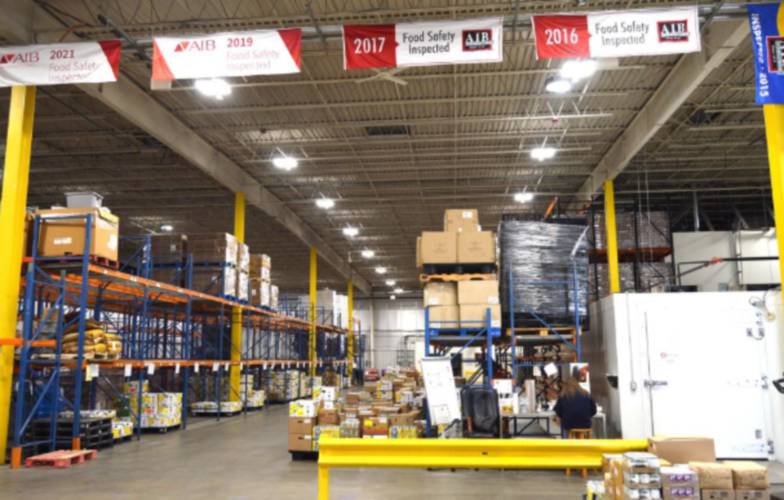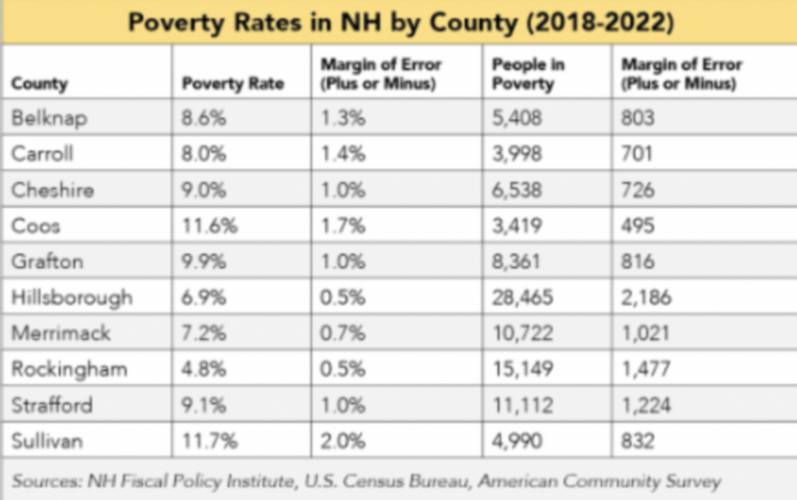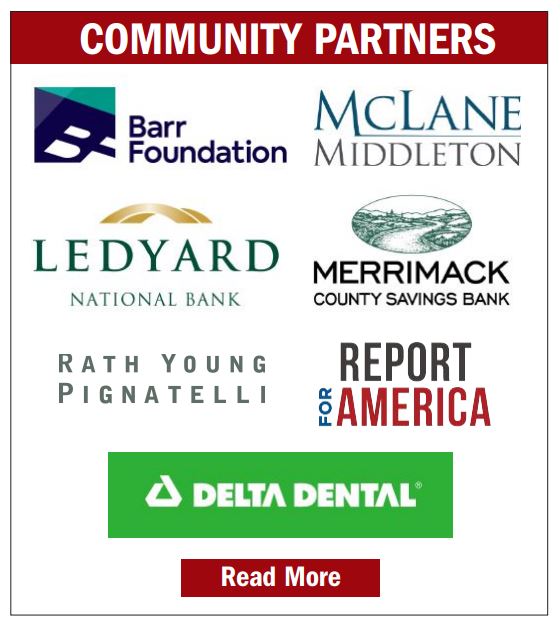Food insecurity on the rise in N.H.
| Published: 05-02-2024 10:36 AM |
Caitlyn O’Connor of Littleton has struggled at times to afford healthy food options to feed her family. The married mother with two young daughters, ages 4 and 9, works part-time and often plans ahead to purchase healthy food at the Littleton Co-op and other markets where she shops.
Since her first daughter was born, O’Connor, 35, says she has found ways to stretch her Supplemental Nutrition Assistance Program (SNAP) dollars, the federal nutrition assistance program administered by the U.S. Department of Agriculture (USDA). O’Connor does this through the Granite State Market Match program—expanded this year to include frozen produce—which allows people to make healthy food choices while stretching SNAP benefits. This program allows people to buy fresh fruits and vegetables with their EBT card and gets federal and state funding as well as donations from individuals and organizations.
“What we eat affects how we feel, and once I learned about the Market Match program at the Co-Op in Littleton it was mind blowing,” O’Connor says. “Your $20 will buy you $40 of food and that is really cool.”
O’Connor says she wishes more people would access such programs. In Grafton County, where O’Connor lives, 20,859 people are eligible to receive SNAP benefits but only 4,568 had enrolled in the program as of June 2023, according to NH Department of Health and Human Services (DHHS).
O’Connor’s husband works in the agricultural industry, which is seasonal, and she is working part time at a restaurant while finishing her degree with hopes of becoming a counselor or caseworker. In the past she has been the family’s sole earner due to high childcare costs and because her husband has been out of work due to Lyme disease. But even with two incomes it’s still difficult to make ends meet, she says. “Especially with the way prices are going,” O’Connor says.
Between January 2019 and January 2024, food prices in the northeast rose about 25.6%, according to the NH Fiscal Policy Institute’s (NHFPI) February report on poverty and food insecurity during and after the pandemic.
O’Connor is among the thousands of Granite Staters who experience food insecurity and need assistance.
The biggest drivers of food insecurity, says Eileen Liponis, director of the NH Food Bank, are poverty and lack of access to healthy food, which for some is caused by a lack of transportation.
Article continues after...
Yesterday's Most Read Articles
 New Hampshire legalizes public alcohol consumption in designated ‘social districts’
New Hampshire legalizes public alcohol consumption in designated ‘social districts’
 State rules Epsom must pay open-enrollment tuition to other school districts, despite its refraining from the program
State rules Epsom must pay open-enrollment tuition to other school districts, despite its refraining from the program
 Town turmoil: Chichester town administrator resigns again
Town turmoil: Chichester town administrator resigns again
 New Hampshire providers brace for Medicaid changes that reach beyond healthcare
New Hampshire providers brace for Medicaid changes that reach beyond healthcare
 Warner town administrator granted restraining order against selectman
Warner town administrator granted restraining order against selectman
 NH judge decides to pause Trump’s birthright citizenship order
NH judge decides to pause Trump’s birthright citizenship order
According to NHFPI, data suggests that while food insecurity and poverty declined before and during the pandemic, they rebounded when federal COVID-related support programs ended.
About 7% of NH’s population, approximately 96,477 people, and 9% of children in the state have been identified as food insecure by Feeding America, a national hunger relief organization, says Liponis. “And in the North Country, where food insecurity is higher, I think two or three grocery stores have closed since I started [in 2017],” she says.
In 2022 about 98,000 Granite Staters lived at or under the official poverty measure of $29,678. According to NHFPI, approximately 48,000 people lived at less than half of poverty-level income, while an estimated 247,000 people, nearly one in five residents, lived at less than twice the poverty-level income. The overall poverty rate in NH in 2022 was 7.2%.
To combat food insecurity in the state, the NH Food Bank partners with various organizations, and runs several programs, including a culinary job training program, Cooking Matters, SNAP outreach and application assistance, Granite State Market Match, Doubleup Food Bucks, and also runs a mobile food pantry. In 2023, the NH Food Bank provided 16.3 million pounds of food and 13.6 million meals through 400 agency partners in NH.
Before the pandemic, the NH Food Bank’s production kitchen, which prepares bulk meals for partner agencies, was producing about 2,500 meals per week but now produces about 5,000 to 6,000 per week, Liponis says. “Demand has gone up and we’ve done a lot of investing in the kitchen,” she says.
Prior to COVID, the NH Food Bank’s mobile pantries averaged 250 families six to 10 times a year. But the pandemic changed those numbers drastically for families as well as college students and others facing financial challenges. “We were doing three [mobile pantries] a week during the height of the pandemic,” Liponis says. “Our biggest one was 1,200 cars down in the Comcast parking lot and over the last two years we’ve been holding steady at one a week with 400 families per mobile food pantry.”
SNAP “provided nutrition assistance to about 29,000 children and more than 45,000 adults each month throughout 2019,” the NHFPI states in a 2021 report. During the pandemic, all households on SNAP were eligible to receive emergency allotments, but not all received the same amount. Emergency allotments provided households an additional $95 in benefits, or an additional benefit valued up to the maximum benefit for their household size. Emergency allotments ended in March 2023 and on Jan. 1, 2023, NH increased gross eligibility for SNAP for all households to 200% of the federal poverty level.
“While SNAP provides food assistance to people with limited resources and supports the economy, there are more eligible individuals in New Hampshire than are enrolled. Estimates show there were up to 17,000 additional children eligible for aid who were not receiving it in 2019, as well as tens of thousands of adults who were likely eligible but not enrolled,” the 2021 NHFPI report states.
Laura Milliken, executive director for NH Hunger Solutions, says a big reason for the SNAP enrollment gap is due to the lack of a state outreach program. States are entitled to federal dollars to publicize SNAP and help eligible people apply. The state or another private entity must fund 50% of the program and the federal government matches that. New Hampshire ended its SNAP outreach program in 2017.
In 2022, legislation was enacted to require the state to have a SNAP outreach plan and in 2023 the SNAP outreach contract was awarded to the NH Food Bank, which must raise 50% of the dollars to fund the program.
“The Food Bank is doing amazing work to get the word out and we’re hoping that will make a difference. SNAP is incredibly important for lifting people out of poverty and making ends meet,” Milliken says.
O’Connor recalls two contrasting experiences when applying for SNAP benefits for the first time following the birth of her first daughter. O’Connor was told by a NH Department of Health and Human Services employee, who only glanced at her pay stub, that she likely wouldn’t qualify. “When I apply for benefits, I get a little neurotic. I do my math before I even apply to make sure no one’s going to tell me this doesn’t qualify,” O’Connor says. “That lady didn’t know what my rent was or anything else and she wasn’t even my case worker.”
For people who aren’t proficient with math or who aren’t self-confident, O’Connor says negative encounters like this can lead them to give up. “Applying for benefits can be hard work.”
After finding a rental in Vermont, O’Connor reapplied for the equivalent benefits there and says the experience was a relief. “I was treated with respect, and set up an appointment right away,” she says.
New Hampshire lagged neighboring states in SNAP outreach. Maine, Vermont, and Massachusetts administer SNAP for their eligible residents and implemented outreach plans during FY 2019. They “had broader eligibility guidelines than New Hampshire, allowing more households to receive nutritional benefits,” NHFPI states in its 2021 SNAP report.
For people having a hard time with SNAP paperwork, the NH Food Bank has a toll-free hotline. “The benefit of helping individuals and families in need with SNAP can have positive affects for communities overall,” Liponis says. “That money goes back into the economy. It’s important for people who need it to get enrolled.”
In its SNAP report, NHFPI states, “Analysis of federal economic stimulus policies during the Great Recession, specifically during early 2009, by Moody’s Analytics showed that every dollar invested into new SNAP benefits to support individuals and families generated $1.74 of economic activity. More recent analysis from the USDA in 2019 estimated that every dollar invested in new SNAP benefits would generate about $1.50 in economic activity when the economy is weak.”
When Milliken joined NH Hunger Solutions during the pandemic, her goal was to shift attention to the root causes of food insecurity and to find solutions by advocating for policy change.
“The ultimate cause of food insecurity is poverty,” she says. “I didn’t want to create an organization that was duplicating services and what many people were saying at the time was that New Hampshire needed to look upstream. We needed to figure out why so many people in our state are hungry.”
New Hampshire Hunger Solutions works to combat hunger in NH and improve access to nutrition programs like SNAP, WIC, and others, and partners with the NH Food Bank, the NH Food Alliance, and many others across the state.
“We always say that we see our system of food and nutrition supports in New Hampshire like a power grid that moves healthy food to individuals and families,” Milliken says. “But unfortunately, New Hampshire is well connected in some places and patchy or non-existent in others.”
Getting people enrolled in federal nutrition programs like SNAP, School Meals, Summer Meals and the Supplemental Nutrition Program for Women, Infants and Children (WIC), is a big part of what NH Hunger Solutions does.
When it comes to enrolling eligible people in SNAP, Milliken says NH Hunger Solutions and the state have work to do. Only 31% of those who are eligible to receive SNAP benefits are enrolled in the program. Nationally, NH was ranked 39th in SNAP enrollment and 47th in the school breakfast program.
“There are a number of things going on here that need to be addressed,” Milliken says, citing work being done to eliminate administrative barriers between programs. “We’re trying to connect people to that grid and we’re doing that in a number of ways.”
One way NH Hunger Solutions is helping to connect people to the food grid, Milliken says, is to close the enrollment gap for federal nutrition programs including SNAP and school meals.
Milliken says many kids don’t participate in breakfast programs because of stigma. “The traditional breakfast service program is early in the morning in the cafeteria prior to the start of the school day,” Milliken says, explaining that typically the only kids who participate in breakfast before the school bell are those receiving free and reduced breakfast, and this causes many low-income children to opt out of the program. “They don’t want to be tagged as a poor kid.”
An evidence-based way to overcome this, Milliken says, is to offer breakfast as part of the school day. “We call it Breakfast After the Bell,” she says. Strategies involve having breakfast in the classroom, grab-and-go carts in hallways, and USDA-approved healthy vending machines. “The numbers indicate very few schools are using this approach. But in some states kids are assigned a student ID number with a card. They swipe the card and only the person who’s managing the cart knows whether they’re a free and reduced child or not,” Milliken says, adding the goal is to run the breakfast program like lunch where everyone participates and no one knows who is receiving free or reduced meals.
Students using school meals programs during the pandemic increased significantly due to waivers that allowed all students to receive breakfast and lunch regardless of family income. Those waivers ended in September 2022 and since that time Milliken says school meal debt has risen. “This is likely because people didn’t know the waivers had ended,” Milliken says, adding that many people also may not have known they were eligible after the program ended and that they needed to reapply.
SB 499 is a bill introduced this year that would expand options for free and reduced meals for students and provide assistance for people in need of food assistance. The bill, introduced by NH State Sen. Rebecca Whitely, a democrat representing District 15 that includes Concord, would create a summer EBT program for families with children and direct the NH DHHS to participate in the Elderly Simplified Application Project (ESAP) within the SNAP program. The ESAP program provides food assistance to eligible older adults and people with disabilities.
One promising program aimed at ending hunger for children is End 68 Hours of Hunger. Founded in NH in 2011, the program is now a national nonprofit that combats food insecurity among school children by providing them with weekend food bags. The program focuses on elementary school children identified by school guidance counselors and nurses as being most at risk of food insecurity over weekends.
“We’re feeding 2,400 to 2,500 kids each weekend in New Hampshire,” says Kate Roman, End 68 Hours of Hunger’s executive director. “We’re providing free breakfast and lunch so kids don’t show up to school exhausted and irritable.”
Roman says the program has been successful, serving over a million meals nationwide this school year. “Our goal is to make sure we’re reaching all the children,” she says, adding the program is working on expanding into NH’s North Country and is addressing stigma to make access to healthy food easier.
Gather, located in Portsmouth and serving the Seacoast area, is one of the oldest social service organizations in the country. It has expanded over the past seven years to become one of the leading organizations in the state addressing food insecurity. Some of Gather’s services include farmers’ market style mobile food distribution, a mobile food bus, a pantry market, advocacy, and meals for children during school vacations and in the summer months. It is one of many such organizations around the state.
“We run very much with the support of a tremendous number of volunteers,” says Anne Hayes, Gather’s executive director, adding that between 40 and 50 volunteers as well as 27 full-time employees work for Gather each day. “We get about 2,200 volunteer hours a month and we train our staff and volunteers to treat people the way they would want to be treated.”
This past January, Gather saw the highest demand ever for food at the pantry in Portsmouth, serving roughly 2,350 people that month.
Gather and Great Bay Community College in Portsmouth have been collaborating since 2017 to support food security in the Seacoast through the Gather Café, which offers coffee, pastries, and affordable breakfast and lunch options for students, faculty, and staff. Gather also produces meals at the college’s kitchen that it distributes in its food pantry market Monday through Thursday.
While the NH Food Bank receives most of its food from Feeding America, Liponis says additional local donations are down because of the high price of food. “I’m buying 600 times more food than pre-COVID,” Liponis says, explaining there is less salvage from grocery stores due to cutbacks on a variety of products during the pandemic.
Federal funding through the USDA’s Local Food Purchase Assistance program funds the NH Feeding NH program, and allows the Food Bank to contract with farmers at the beginning of the season and funds agency purchases from local farmers during the growing season. The program also allows the Food Bank to bulk purchase at the end of the growing season. “We’re hoping that this program folds into the Farm Bill,” Liponis says, referring to the 2023 Farm Bill that would provide $1.5 trillion over 10 years to support food programs around the country. Congress failed to pass the Farm Bill last year and the 2018 Farm Bill has been extended until September 2024.
“We’ve had some transformative stories from some of the farmers we’ve worked with. Two years ago one guy said, ‘I’ve never sold out of apples in 10 years.’ I’m from a farming family, so I know the money’s hard at the beginning of the season. If someone’s paying you to grow crops, that helps. And at the end of the season, that apple farm has got an empty cooler and money in its pocket. And those apples are in somebody’s tummy,” Liponis says.









 ‘A little piece of everything I like’: New Pittsfield barbershop brings more than a haircut to downtown
‘A little piece of everything I like’: New Pittsfield barbershop brings more than a haircut to downtown Canterbury honors ‘real heroes’ with updated Military Veterans’ Project
Canterbury honors ‘real heroes’ with updated Military Veterans’ Project Look, up in the sky! It’s… an Airstream trailer?
Look, up in the sky! It’s… an Airstream trailer?
